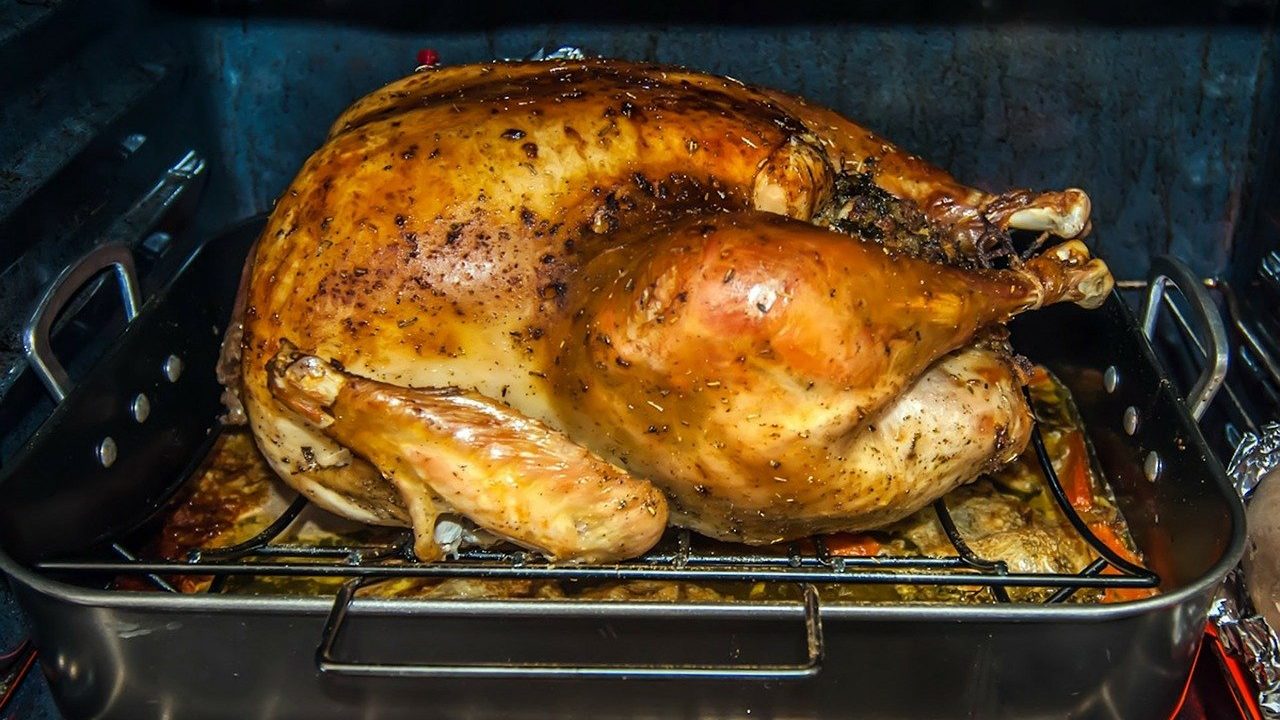Denise DeSalvo is a senior instructor in the department of human nutrition and hospitality management within the College of Human Environmental Sciences. She offers the following suggestions for cooking your holiday turkey.
Planning for a successful turkey should start well before it’s popped into the oven, including having your tools ready. DeSalvo recommends assembling aluminum foil, a food thermometer calibrated according to manufacturer instructions, and a roasting pan at least two inches deep.
“A deeper pan will allow you to add water or broth and also collect cooking juices that can be used to make gravy. No need to purchase a special pan; in fact, you can find disposable aluminum pans that will accommodate a turkey during the holiday season.”
Pay attention to the size of the turkey. More than one cook has underestimated the weight of their turkey, leading to miscalculating both thawing and cooking time.
DeSalvo said to use the U.S. Department of Agriculture guidelines of one day of thawing for every four to five pounds of turkey. “For example, an 18-20 pound bird requires at least four days in the refrigerator to ensure it is thawed and ready to cook.”
The refrigerator is the safest way to thaw the turkey, she said, because consistent temperature decreases the opportunity for pathogens to grow. While thawing under cool, running water is also safe, this method is not realistic for a large bird. DeSalvo doesn’t recommend microwave thawing either, and warns that the turkey should never be left to thaw on a kitchen counter.
Let the turkey thaw safely in the fridge, never on the kitchen counter.
After the turkey thaws, remove the small paper “goodie bag” of giblets, heart, liver and neck. But what if you forget and cook the bag inside the turkey; is Thanksgiving ruined? “As long as you thaw and cook properly, the cooked bag of goodies shouldn’t be a problem. I would not eat them personally, but no real reason to throw the turkey away.”
To keep the turkey moist, cut small slits in its skin, then place pats of butter under the skin. Or, coat the bird with an oil such as canola before it goes in the oven.
As the bird begins to brown, you can tent the aluminum foil over the turkey. Add water or broth to the pan for moisture. “Some folks prefer cooking the turkey in a specially designed cooking bag which can help keep the meat moist,” DeSalvo said.
Now is when your calibrated food thermometer comes into play. “Once the thermometer shows the internal temperature of meat on the thickest part of the bird, usually the breast, is 165 degrees Fahrenheit, the meat is done,” DeSalvo said, adding that it is safest to temperature check several places on the bird.
Once the turkey is out of the oven, let it rest 30 minutes before carving. Leave on the table no more than an hour to an hour and a half for a total time of no more than two hours.
Remove leftover turkey from the bone before refrigerating for no more than three to four days at 40 degrees Fahrenheit or lower, or freezing. Stored in air tight containers or freezer bags, leftover turkey can stay in the freezer one to three months and still be tasty.
